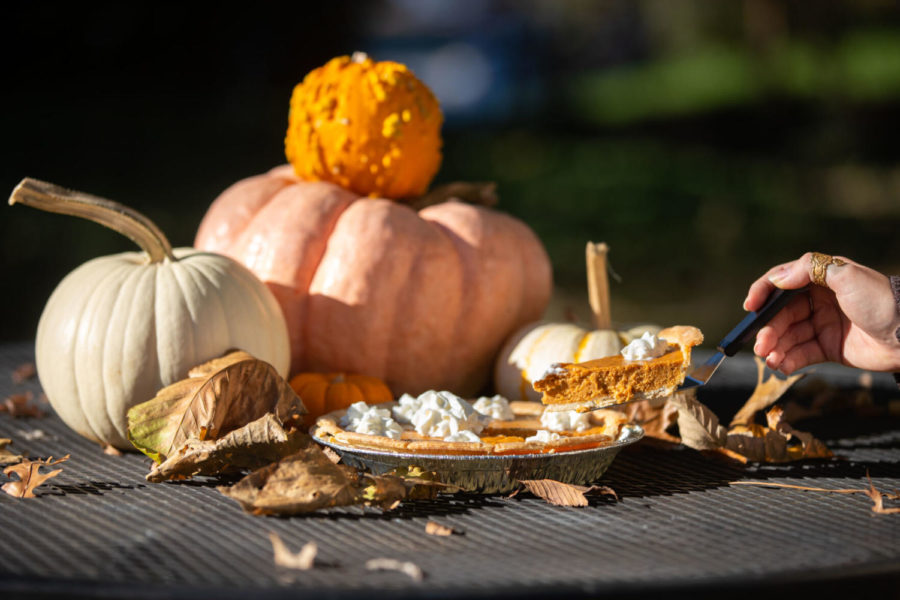Sharing an international perspective on Thanksgiving
A slice of sweet potato pie is served on Wednesday, Oct. 20, 2021, in Lexington, Kentucky. Photo by Michael Clubb | Staff file photo
November 23, 2022
People talking loudly, children running around the table, music louder than aunts in the beauty salon. This is the most realistic and familiar scene, when I remember my country – Brazil.
I believe that what makes Brazil a complex and fluid mosaic of life and colors is the great energy transmitted from person to person. Despite all our social ills, the Brazilian roots are still intact. We still prioritize eye-to-eye contact. We still believe in the strong hug that almost takes your air and your life. We still praise grandma’s well-seasoned food. We have serious conversations with neighbors on the front porch of the house. All this is what, for me, symbolizes being Brazilian.
However, as an international student immersed in American culture, I try to imagine what one of the most iconic holidays in U.S. history – Thanksgiving – looks like with that hint of Brazilian green and yellow.
When I think of Thanksgiving dinner, I mainly think about abundance and how everything is related to the word “plenty:” food is plentiful, and also social values, such as gratitude and sense of community, pervade the holiday.
Moreover, one of the biggest culture shocks I experienced when I first arrived in the U.S. is its individualistic character. Here, everyone builds their own menu of opinions and attitudes. But all of this changes with Thanksgiving; people start serving others rather than themselves.
Everything prioritizes the collective, the family, whatever it may be. It’s as if the so-called “Christmas magic” is working in advance. And when I think about this sense of community and sharing, I imagine how much more memorable a Brazilian Thanksgiving could be for me. While we probably wouldn’t necessarily have a nice marble table or the ability to fill each space with a special dish, we would certainly have the sofa, floor and four coffee table chairs to celebrate.
Like typical Brazilians, we find a way to gather everyone in the same corner. Because that’s who we are: real people who like to be around real people.
The stereotypical imagery of U.S. mainstream culture can make us think, as internationals, that everything is an advertisement for a lifestyle. It’s like we’re in another scene from an American cliché movie. Thanksgiving can be seen, with a more critical eye, as yet another symbol of the idealized American way of life.
Whatever it may represent, I still believe in my ideal picture of such a holiday. People talking loudly. A child running around the table. Music louder than the aunts in the beauty salon. I hope to smell this home even though it’s far from mine.



























































































































































